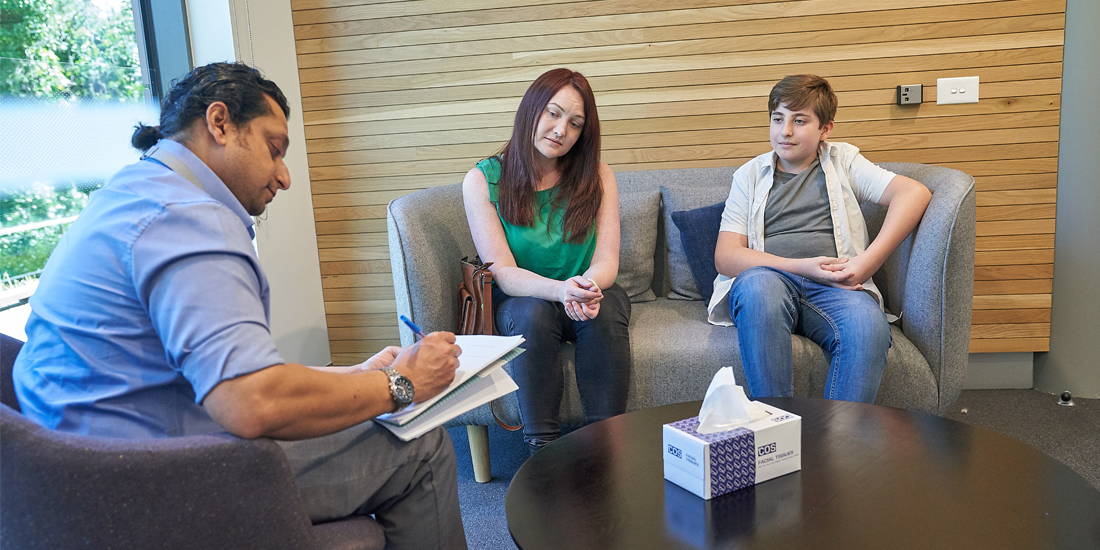
Almost a quarter of young people accessing primary mental healthcare settings smoke tobacco daily, an Orygen/headspace partnership study has found.
The study found 23 per cent of 18–25-year-olds presenting to headspace centres smoked tobacco daily, while 7 per cent of those aged 12–17 did.
That’s compared with 9 per cent of the general population aged 18–24 smoking daily,(1) and one per cent of those aged 12–17.(2)
The findings have prompted researchers to call for more resources for smoking cessation supports through mental health services.
Orygen’s head of health services and outcomes research, Professor Sue Cotton, said this was the first in-depth Australian study to look at associations between age, tobacco use, mental health and other factors in young people seeking mental healthcare.
“At a time when smoking in the general Australian population is at an historic low, it’s concerning to see so many young people with mental ill-health using tobacco,” Professor Cotton said of the findings published in Nicotine & Tobacco Research.
“Both tobacco smoking and mental illness often start in adolescence. Young people with mental illness have much higher smoking rates than their peers. Over the longer-term, tobacco use can place young people at greater risk of financial burden, poor health outcomes and early mortality.
“Initial presentation at mental health services could be an important opportunity to help young people reduce or stop tobacco use. More resources are needed to support targeted treatment.”
The study was a joint project between Orygen, The University of Melbourne and headspace National Youth Mental Health Foundation.
Paper co-author and headspace Chief Scientific Advisor, Professor Debra Rickwood, said smoking could make life more challenging for young people living with mental ill-health and affect their mental healthcare.
“Young people might start or continue smoking because it feels like it helps them relax and deal with their anxiety, depression and stress. But it doesn’t really help, and when young people try to quit their mental health can get worse. Smoking also affects young people’s physical health, and good physical health is a protective factor for mental health. So the health impacts of smoking can have a knock-on effect on mental health too,” Professor Rickwood said.
“Early intervention primary health services like headspace provide an important opportunity to support young people with the interrelated issues of mental ill-health and smoking. headspace can help young people to recognise and understand the connection between smoking and mental health, and to find healthier ways to deal with stress.”
The study involved a survey of 1055 young people aged 12–25 who presented to one of five headspace centres between 2016 and 2018. Three of the headspace centres were in metropolitan areas and two were in regional locations. All kinds of tobacco smoking methods, including e-cigarette usage, were recorded.
Of the 247 young people who had smoked in the past three months, a worrying 68 per cent reported daily tobacco use.
A key predictor of tobacco use was having a mental illness other than depression or anxiety.
“Young people with disorders such as bipolar disorder, psychosis, developmental and/or behavioural disorders were more likely to use tobacco ‘at least weekly’,” Professor Cotton said.
“This suggests that young people with less common, but typically more severe types of mental illness, are more likely to use tobacco.”
Tobacco use was considered for two groups: adolescents aged 12–17 and young adults aged 18–25.
In the older cohort aged 18–25, the prevalence of daily tobacco smoking was more than three times higher than in the younger group (23 per cent versus 7 per cent).
Professor Cotton said the findings made a strong case for mental health services to provide holistic support for young people – addressing mental health while also supporting young people to reduce their tobacco use.
“headspace services and youth mental services provide a unique opportunity to address this issue early. More resources are needed to develop, implement, and evaluate targeted and youth-specific tobacco cessation treatment programs in youth mental health services,” Professor Cotton said.
Professor Rickwood said the study offered important ways headspace could continue to support young people with issues affecting health and wellbeing, now and into the future.
“Alcohol and other drug services are already a core component of the headspace service offering for young people, and this includes those who need support with their smoking. Seeking support at headspace is an opportunity to identify smoking as an issue and to work with service providers to effectively quit. This will have major benefits in both the short and long-term for young people’s physical and mental health,” Professor Rickwood said.
The study was supported by a National Health and Medical Research Council (NHMRC) Partnership Grant. Professor Cotton is supported by a NHMRC Senior Research Fellowship.
1. Australian Institute of Health and Welfare. National Drug Strategy Household Survey 2019. Canberra: AIHW;2020.
2. Guerin N, White V. ASSAD 2017 Statistics & Trends: Australian Secondary Students’ Use of Tobacco, Alcohol, Over-the-counter Drugs, and Illicit Substances. Victoria: Cancer Council Victoria; 2020.